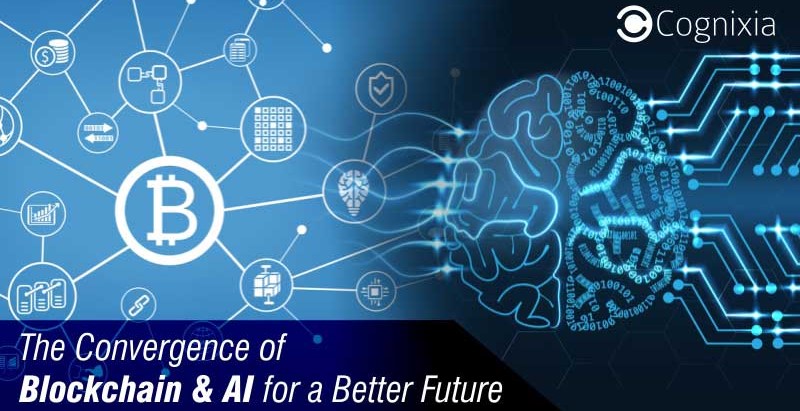The 2 emerging technologies, AI and Blockchain have already caused massive disruption across industries. Both these technologies have proved themselves successful in multiple areas of application. While Blockchain is mostly associated with cryptocurrencies, it has significantly impacted other industries like healthcare, supply chain, education, law, fintech and so on. Blockchain, in simple terms, is a ledger or distributed database constituting public or private network of nodes. This ledger is updated in real-time in such a manner that all the nodes at a given point of time have consistent information stored on them. This eliminates the probability of any kind of discrepancies or fraud.
AI, on the other hand, has been much older than the Blockchain technology. Its impact, however, has been fully realized in the recent times with the emergence of technologies like Big Data. As we all know, computers have been doing wonders, but they do not have a brain of their own. The commands, in the form of instructions, given to them by the human brain make them smarter. Artificial Intelligence strives to forearm computers with human-like intelligence. And this is achieved by feeding the machines with voluminous sets of data. Siri, Alexa, and Google Assistant are the perfect examples of AI.

Both AI and Blockchain are in their infancy but promise a lot for the future, individually as well as in convergence. Some of the interesting use-cases and implementations of combining AI and Blockchain are as follows:
Making Financial Transactions More Trustworthy
AI-based algorithms can be applied to detect frauds in financial transactions. But, ultimately the auditing and accuracy check has to be done by humans. This is where the risk of data tampering creeps in, rendering the whole effort futile.
Blockchain comes to the rescue by making the auditing process fool-proof. The information stored on the nodes is secure and any attempt to modify the information would require modifying all the blocks including the first node. Practically, this is too complex and almost impossible to achieve thus making data secure throughout the process.
Takeaway: AI systems alone for financial transactions are not very trustworthy. Combined with Blockchain, transparency comes into play in these systems winning the general public trust.
Ensuring Personalization in a Highly Secured Way
To offer customers more personalized experience, many businesses today utilize the highly sensitive personal data. AI-based algorithms based on these data provide customers with products based on their personal choices. AI, however, cannot secure these data making customers vulnerable to institutions with malicious intent. For instance, patient record in the healthcare sector must be minded at any cost to avoid jeopardizing patients’ health. Blockchain with its cryptographic encryption techniques can secure the sensitive data. AI then can utilize these data smartly to offer more personalized experience in a secure manner.
Takeaway: Blockchain encrypts the data making it secure. And AI leverages the data to devise algorithms that provide personalized experience to customers.
Making the Blockchain Technology Itself Very Efficient
Blockchain technology has brought security and transparency at a higher level, although, to achieve this for every block, it utilizes a lot of computing power. Data mining techniques like the hashing algorithm uses the brute force approach in which all possible combinations are tried until the correct or verifiable character is found. This squandering of the computational power can be mitigated effectively using AI-based machine learning algorithms. Machine Learning is a subset of AI, and with the right set of data, it can significantly minimize the number of combinations used to achieve the right character in the blocks.
Takeaway: With the right set of training data utilized by Machine Learning & AI, Blockchain technology becomes highly efficient as the use of computing power is minimized greatly.
Blockchain and AI individually are established to a great extent. And their combination can also be extremely beneficial for industries of various types. In combination, these 2 technologies have the capability to cause ground-breaking changes.

